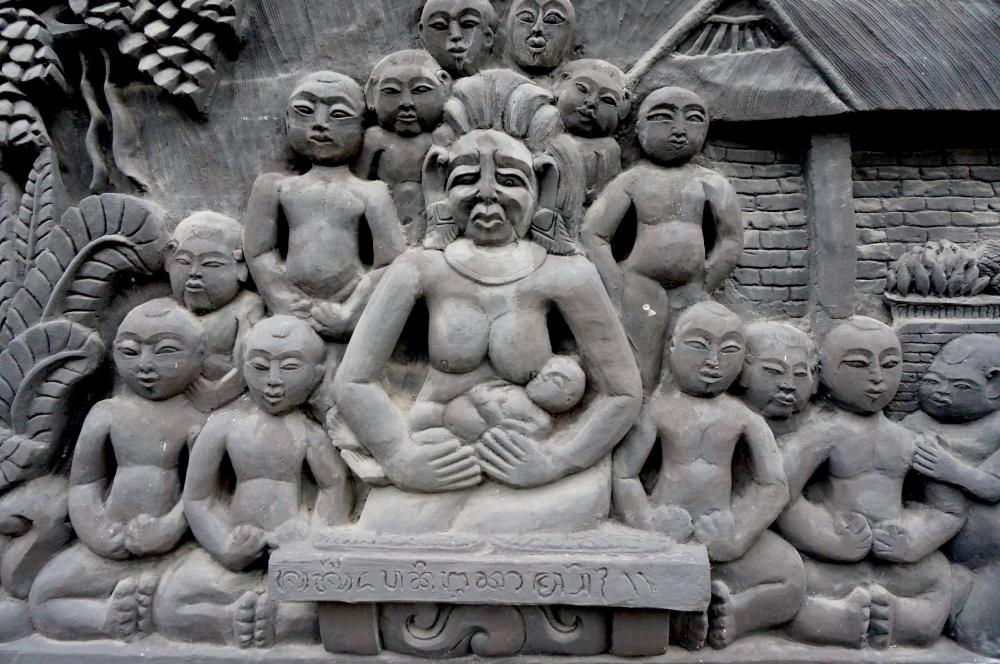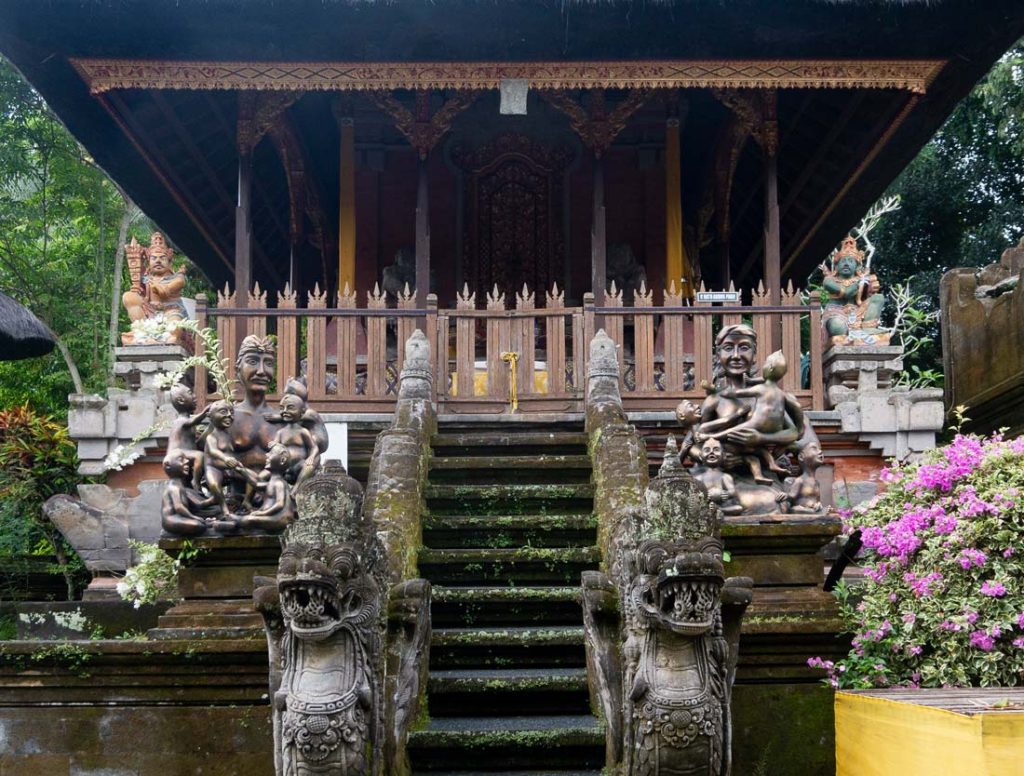Folk stories are told all around the world and are part of the cultural fabric of different societies. Passed down through the generations, they are more than just bedtime stories, they are often imbued with morals and messages that reflect the values of each time and place, hoping to instil the next generation with the right virtues to live a good life.
Folk stories around the globe will often cover similar themes, from family values and appropriate behaviour to religious piety. These same themes are found in Bali’s own folklore, coloured with a local flair, some mysticism and of course, the godly. Here we share one of the island’s most classic of tales, this is the story of Men Brayut and her large family.

The Brayut Bunch
Yes, Bali has its own ‘Brady Bunch,’ a timeless family tale that shares of parental challenges and triumphs. This is the story of the Brayut family, a family of 20, with Men Brayut (mother) and Pan Brayut (father) at the head.
Men and Pan Brayut were a simple farming family, adherents of the Buddhist religion but of course practitioners of Bali’s ancestral rites and rituals. They are known for having 18 children (a multiple of 9 which is symbolically important in Hindu philosophy), who are the source of their struggle but also their salvation.
The story begins with the family as they prepare for Galungan Day, and describes as an exhausted Men Brayut falls asleep, having cared for the rabble of children all morning. Meanwhile, Pan Brayut is busy in the kitchen, he has cooked the pork and prepared it all for the Galungan offerings, letting his wife rest, taking on some of her offering preparation chores.
Later, Men Brayut wakes up and is feeling famished. She sees the delicious pork and ceremonial food all laid out and without thinking begins to eat it. So hungry is she that she ignores her crying children as she feeds ravenously upon the feast. Suddenly, her husband enters and sees that she has eaten the ceremonial food and scolds her. A fight ensues: “Not only do you not help to prepare the offerings, you go ahead and eat it all yourself!” shouts the angry husband. “All the while our many children are neglected.” In her own fury, Men Brayut spits back: “Well, I wouldn’t be so exhausted if we didn’t have this many children — all because you are unable to control your lust!”

Alas, Pan Brayut seeks the wisdom of his spiritual teacher, Prince Jembong, from whom he learns the teachings of Buddha. The struggling father meditates under the large kepuh tree, and finds solace in his situation, seeing what must be done. The story continues with Men and Pan Brayut essentially accepting their responsibility as parents of these 18 children and, despite their low social and financial status, do their best to raise them all well. They succeed, and all 18 children became standup members of the community.
Completing their ‘task’ as parents, the committed mother and father thus leave their home and take up a life dedicated to spirituality – the next ‘phase’ of life, wanaprasta (retired life).
Key morals and takeaways
There is a lot to learn from this little story about a big family – what can we identify? It’s a message to parents, that the Brayuts, despite the difficulty, must accept the responsibility of their parental role and are obliged to give their children a good upbringing. It hints at the risks of succumbing to one’s lust so easily, and also the solace and guidance that one’s belief in God and spirituality can give you in times of trouble. In this case, the wisdom found in Buddhism. The story suggests that responsibilities must be shared, lest conflict arise between a couple.
The story’s ultimate lesson is that spirituality is a part of family life, but also that a positive family life leads to better spirituality.
Finally, it is a reminder on the four Hindu stages of life, catur asrama: (1) Brahmacari, student life, where one’s goal is to learn and acquire knowledge; (2) Grhasta, household life, when an individual gets married and assumes the responsibility of raising children and building a stable household; (3) Wanaprasta, retired life, where you pass the household on to the next generation and begin spiritual learnings and liberation; and finally (4) Sanyasin, renounced life, where you release any material attachments and focus on achieving enlightenment through a simple and peaceful life.
Men and Pan Brayut have become immortalised figures in Balinese everyday life. Not only as symbols for familial responsibility but also as symbols of fertility. This is specific to Men Brayut, of whom many statues have been made, depicting her carrying many children.







